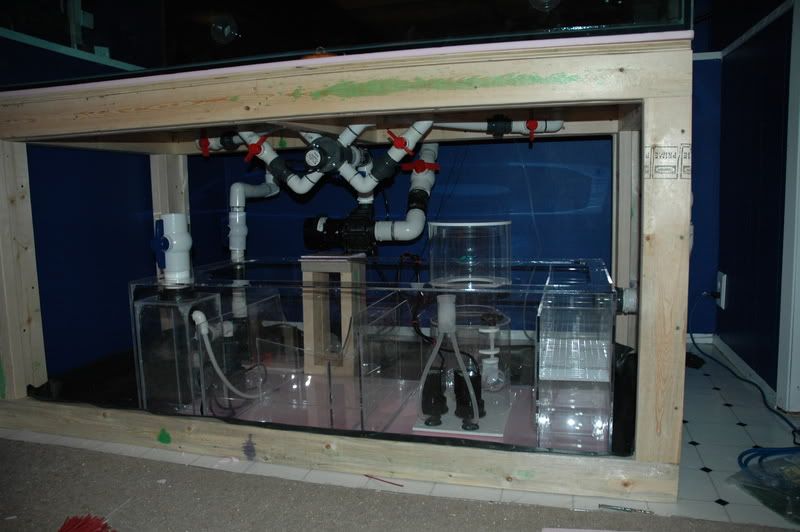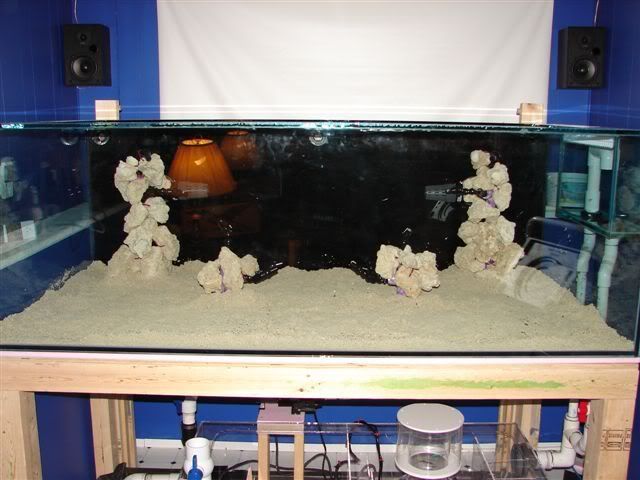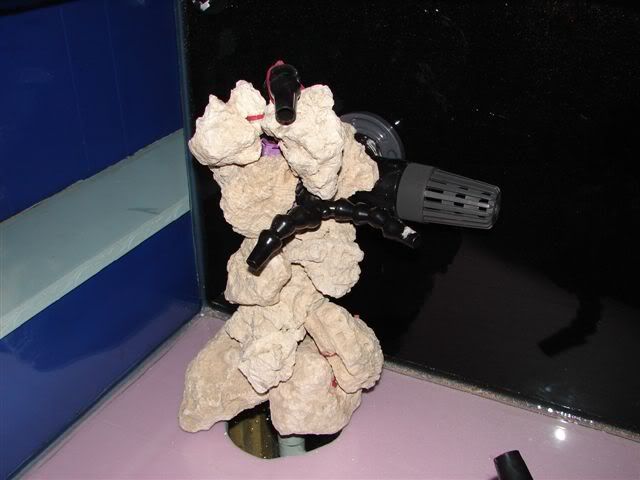
 |
|
||||||||
| Portal | PhotoPost Gallery | Register | Blogs | FAQ | Members List | Calendar | Search | Today's Posts | Mark Forums Read |
 |
|
|
Thread Tools | Display Modes |
|
#1
|
|||||
|
|||||
|
Making plans for an upgrade to a 230g and wondering if you could from the start, would you go with a closed loop set-up(looks clean, but not movable or quality good performance powerhead pumps, movable & bulky (eg Tunze) I find pros and cons with either way, so looking for what others think. Alternating high flow is what I'm really after of coarse. Let the debate begin
__________________
Mike 150g reef, 55g sump, T5's, Vertech 200A, Profilux III - German made is highly over rated, should just say Gerpan made. Reefkeeper - individual obsessed with placing disturbing amounts of electricity and seawater in close proximity for the purpose of maintaining live coral reef organisms. |
|
#2
|
|||||
|
|||||
|
I'm going with closed loops with my new tank. One closed loop through the bottom of the tank and one over the top. I'll most likely have an Ocean Motions 4-Way on one of the closed loops. I prefer the clean look without seeing equipment.
__________________
Robb |
|
#3
|
|||||
|
|||||
|
If doing a CL, can design so returns aren't noticable (see OM picture forum), something a little harder with PH unless using something like a Tunze rock.
PH and CL can both also give noise. Might get a overall higher flow with PHs than a external pump for the same noise level if not running a separate fish room (do find my Dart though ok for being under the tank). My tanks been up for a couple years with a CL and still no regrets. |
|
#4
|
|||||
|
|||||
|
Both can be good, in general for larger tanks a closed loop can be a cheaper alternative. Here's one I did on a custom 270 gallon:
  Pump outputs were placed through the bottom pane and the inputs on the back to avoid sucking in sand. Also I went with two inputs rather than one single to reduce the suction velocity. I also installed a 4-Way OM and mounted it sideways over the sump for easy maintenance which is key for such a system, you need lots of space otherwise it's just a headache waiting to happen.  The outputs where covered with rock using some zip-ties .   So you do get a clean look with the closed loop, but it will probably use more power than a tunze setup. However a tunze setup is going to cost a little more but if you plan ahead you can generate a clean look this these powerheads as well. I've always liked the idea of making your tank a little wider and building an acrylic curtain in the back and placing the tunzes behind the curtain alowing only the nozzles to penetrate into the visible tank area through strategically placed holes. A tunze setup will also give you more control and better alternating flow. In my tank I use both, a closed loop to produce the majority of the flow rate and a tunze to provide a short right angled wave and better water alteration. |
|
#5
|
||||
|
||||
|
WOW, awesome looking setup
|
|
#6
|
|||||
|
|||||
|
Are closed loops *really* a cheap alternative? Seems to me when you start getting into the >2000gph range, the DC drive motors (Tunze, Korallia, Vortech, etc. etc. e-i-e-i-o) edge out the inline pumps...
__________________
-- Tony My next hobby will be flooding my basement while repeatedly banging my head against a brick wall and tearing up $100 bills. Whee! |
|
#7
|
|||||
|
|||||
|
One thing about closed-loops that is easy to forget is the cost and complexity of all the extra PVC. All those unions/valves/elbows/etc. can really add up in a significant way.
|
|
#8
|
|||||
|
|||||
|
Well, I look at it as a cheaper option. To me I see a closed loop using a Dart pump and 4-Way OM costing around $600-700 plus you have to consider plumbing and drilling costs which can make a total around $1000.
You can get a tunze kit with 2 pumps and controller for the same price but the 4 way OM provides 4 points of flow origin where as the tunze kit only 2. So really you need two tunze kits which costs double. So closed loops are GENERALLY cheaper for larger tanks. Although some would argue you get way more flow from all those tunzes, try running a Dart at zero head next to a tunze and tell me which is greater. In addition the fact that you can use nozzles on a closed loop also creates high velocity streams which travel further and you with multiple nozzles pointed at multiple areas of the tank you eliminate more dead space. |
|
#9
|
|||||
|
|||||
|
Oh, I don't doubt you get wicked flow out of a closed loop using a Dart pump.
But the flip side is, at 0' of head the Dart is pushing out 3600gpm and consuming 180watts to do so. A single Tunze 6101 is capable of pushing 3000gph and consumes 36w. So you can have 5 Tunzes before you have the same electrical draw as the Dart. Of course the flip side is that 5 Tunzes will set you back $1500. But a more realistic setup is maybe 2 or 3. So let's say 3 Tunzes versus 1 Dart. Dart: $240 OM-4way: Holy crap, $390?? For real? (Based on this page here: http://www.oceansmotions.com/store/p...f071a68a786482 ) 180W @ 24hours/day @ $.14/kWh (based on my last month's utility bill once all the extra surcharges and crap are all added in) - $18ish per month Tunzes: TS24 kit, ... Holy crap again, $1000? Man have the prices on stuff gone up! I paid $800 for mine!!!! Extra 6101: $435 36W * 3 @ 24 hours/day = $11ish per month So over a 5 year period (assuming flatline power rates, haha, as if  ), total cost of ownership is in the ballpark of: ), total cost of ownership is in the ballpark of:Dart - $1710 Tunze - $2060 Far out, I just completely deflated my argument. Pop! Psssshhhhhhhhhhhhewwwwwww!! (sound of balloon deflating) I .. uh, I had no idea the cost on these things had gone up so much. That's just crazy! I think I paid $300 per my two Tunzes (J&L Boxing Day sales one year apart) and $200 for the multicontroller. The current pricing on them is out of this world!
__________________
-- Tony My next hobby will be flooding my basement while repeatedly banging my head against a brick wall and tearing up $100 bills. Whee! |
|
#10
|
|||||
|
|||||
|
Don't forget to add the $300 worth of plumbing/drilling and chiropractor sessions (for the twisting and bending you'll need to do installing all that stuff) to the CL install. This pretty much makes it a wash.
I priced the two options out myself when I was building my tank and went the Tunze route mainly because of the greater flexibility provided by the Multicontroller over the OM - night mode/feed mode/surging/pulsing/etc. versus switching back & forth. |
 |
| Thread Tools | |
| Display Modes | |
|
|